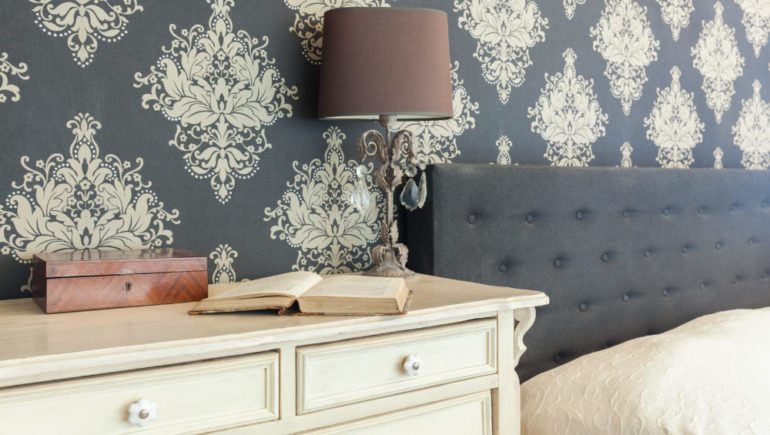Anyone who has removed old wallpaper from a house is likely to think long and hard about adding it to a nice clean expanse of unblemished wall. But today’s wallcoverings deserve another look.
When it works. Open floor plans with a large living space are good candidates for wallpaper, which can give a room character and help define the space. Wallpaper can also be used on a single wall as a splash of color or as a way to make a large room more warm and cozy.
Going bold/going subtle. Computer design and graphics have changed the look of today’s wallpapers. Bold repeating geometric prints are popular along with more subtle tones to simulate a textured backdrop. Or create your own wallpaper by submitting a photo or design to a company that will print customized sheets of wallpaper.
Strippable or removable papers. Many companies now offer papers that are easily removed, coming off in huge strips without soaking. Also known as temporary papers, they are a favorite of renters because the walls need only to be wiped down after removing the paper.
Installing wallpaper. Repair any dings or holes in walls and paint with primer specifically made for wallpaper. This will allow easier removal of the paper — when the time comes. Unless you’re a skilled DIY-er, consider leaving the rest to the pros. Hanging wallpaper requires precision measurement and trimming. Seams must be matched and bubbles removed. The work must be done swiftly to avoid the paper drying too quickly.
Wallpapering is not cheap. With labor costs ranging from $30 to $60 per single roll of wallpaper, expect to pay $400 to $1,000 for a 16-foot by 20-foot room, according to online estimates. Add to that the cost of the wallpaper, which starts at about $25 per roll and can easily cost more than $200 per roll for designer papers.
Removing wallpaper. Before starting, it’s best to clear the room of all furniture and cover the floor. If the wallpaper is relatively new, it may be strippable. Go to a corner or seam at the bottom of the wall and lift the edge with a putty knife. If it comes off in large strips, you should be able to easily remove it.
Older wallpapers won’t be so easy. Mix a liquid stripper concentrate with hot water. Apply the mixture to your walls a section at a time and work from top to bottom. Work in small sections to prevent the stripper mixture from drying out. Let the paper soak for a few minutes, then start stripping with a putty knife or scraper. Some DIYers recommend a vinegar and water mixture to remove stubborn wallpapers while others claim steam removal is the easiest.


